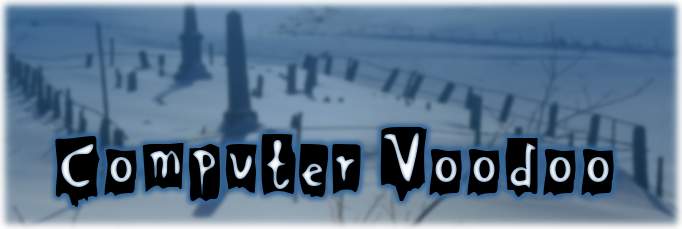disc burning primer
"burning" discs vs. other mediums
The first thing to do if you've never done this before is to change your mindset. Burning CDs or DVDs is different than saving files to floppy disk, USB drives, or hard drives. Burning a disc is like writing in stone where the previous examples are like paper and pencil. With paper and pencil you can go back and erase anything at any location and write in something different. With a CD you write something once and it stays. You can keep writing things until you fill up all the space on the disc, but you can't remove pieces. With RWs you can write as much as you want until full, but in order to erase something you have to erase the entire disc and start from scratch. R media is unable to be erased unlike RW.
CDs
which is which?
When it comes to the CD there is CD-R and CD-RW. Use CD-R for permanent backups (archives) and CD-RW for temporary solutions. I use CD-RWs for my MP3/CD players so when I get tired of listening to the same stuff I just erase the disc and put on something else. CD-RWs are good for transporting data when a network is not available.
what do all the numbers mean?
CDs typically come in two capacities: 650MB or 700MB. The 650MB can hold that amount of data or 74 minutes worth of CD-Audio. 700MB discs can hold 80 minutes worth of audio. 700MB seem to be more commonplace than several years ago.
The number before the x (e.g. TDK 48x CD-R 700MB/80min) is the maximum speed at which the medium may be recorded at. Your CD burner may be able to at 52x, but you'll be limited by the CD-R and will max out at 48x. If your CD burner's maximum speed is 32x you can still use the 48x, but this time you're limited by the speed of the CD burner drive. Whenever possible purchase media rated at or higher than your burning drive.
"Burning drive" sounds funny when read contextually as the emotional concept.
DVDs
of dashes and pluses...
DVDs are a bit more complicated since a standard has not been set. There's DVD-R, DVD-RW on one side and DVD+R and DVD+RW on the other. What can make the difference is what your DVD "burner" is capable of utilizing and what other DVD players can utilize. If you make a video DVD using a DVD+R on your computer you should make sure the stand-alone DVD player attached to your television can play the DVD+R media. Check your manuals or look online. Most DVD burners today cover both + and - formats and many are including the DL or dual-layer format.
...and numbers
The x speeds are similar to CDs, but the amount of data transferred is larger for each x. Most DVD burners are rated in the single digits but still can burn a DVD in a similar amount of time as a CD.
size and dual-layer
Regular R and RW media hold around 4.7GB of data. The DL discs hold up to 8.5GB of data by making use of two layers within the DVD media. Some of your DVD movies you watch may make use of the dual-layer format. Keep your eyes peeled for somewhere about halfway through the movie a split second stop in the video. Typically those that author a DVD try to hide it in a scene switch (e.g. during a fade out and fade in between scenes in the movie). During that moment the player is switching between one layer to the second and that causes a split second pause.
more than just video
DVD stands for "Digital Versatile Disc" (not "Video" like many believe) so not only can you encode them with video, you can store data on them like your CD-Rs or have audio similar to audio CDs. You may find small sections of CD stores that sell DVD-Audio discs. DVD-Audio allows the user to listen to albums recorded in 5.1 surround sound. You'll need a player that can play the DVD-Audio format so don't try sticking one in the CD player. A bit of overkill when it comes to listening to music. I'm still happy with stereo.
Check Andy McFadden's CD-Recordable FAQ for more detailed/acurate info.
